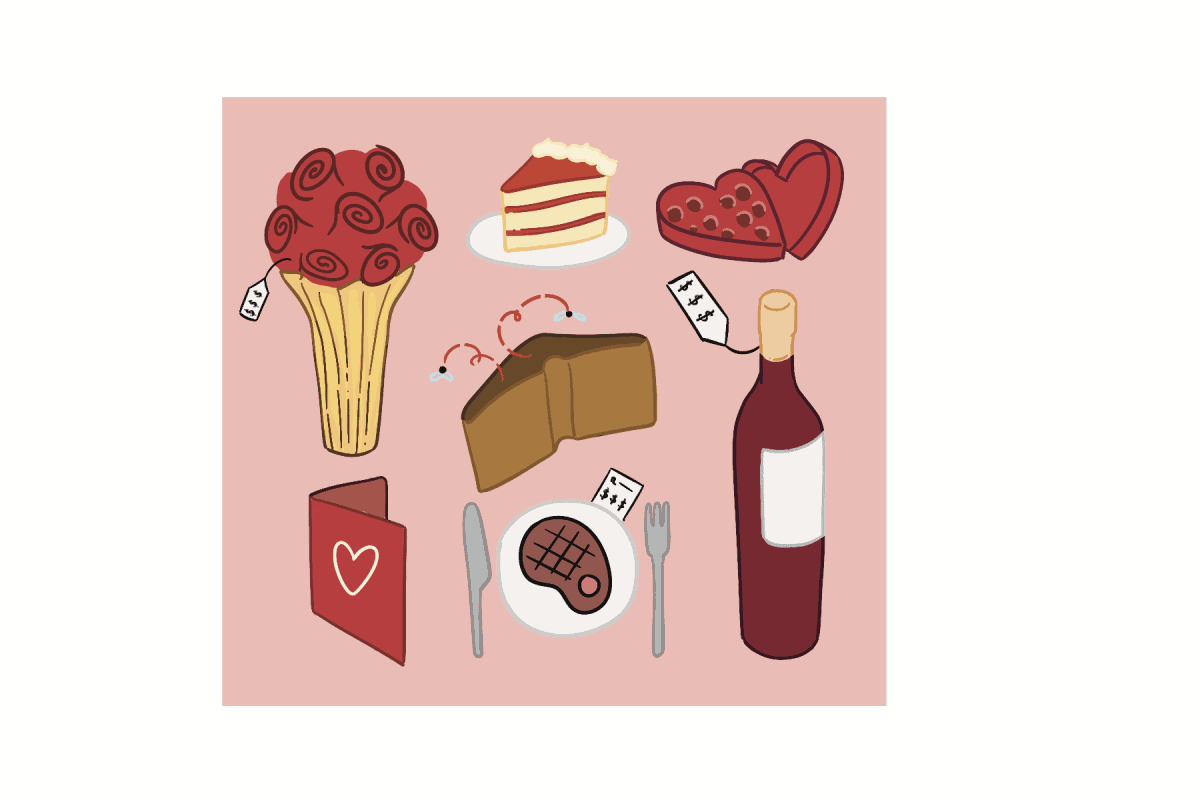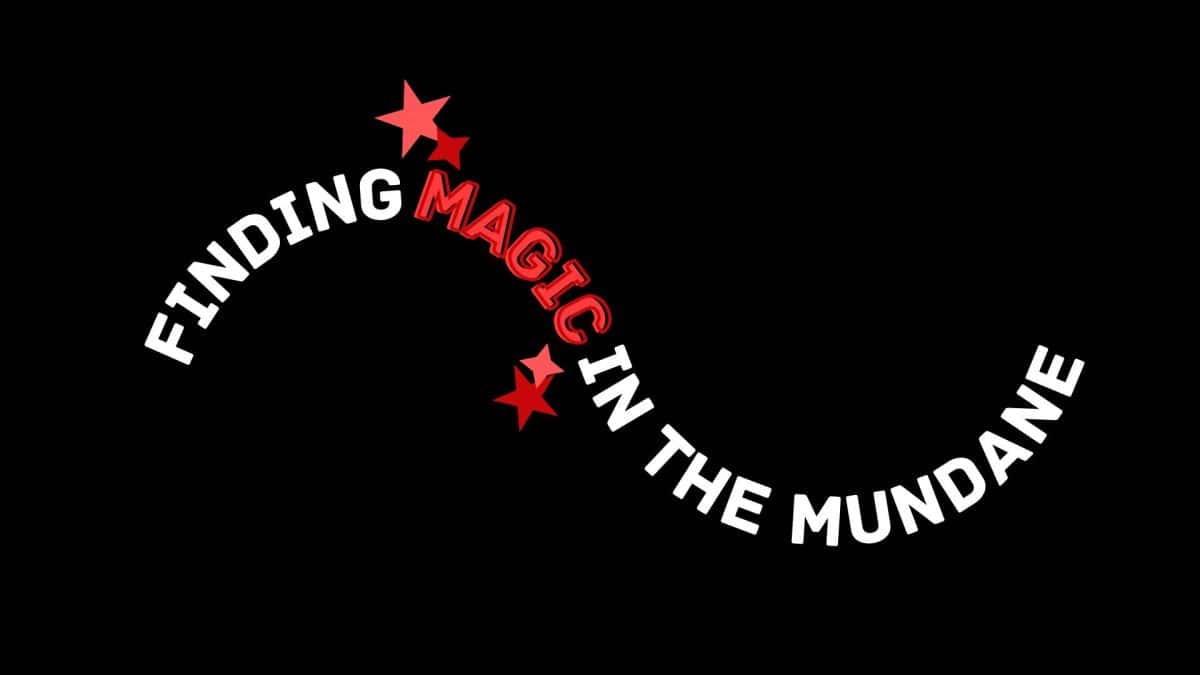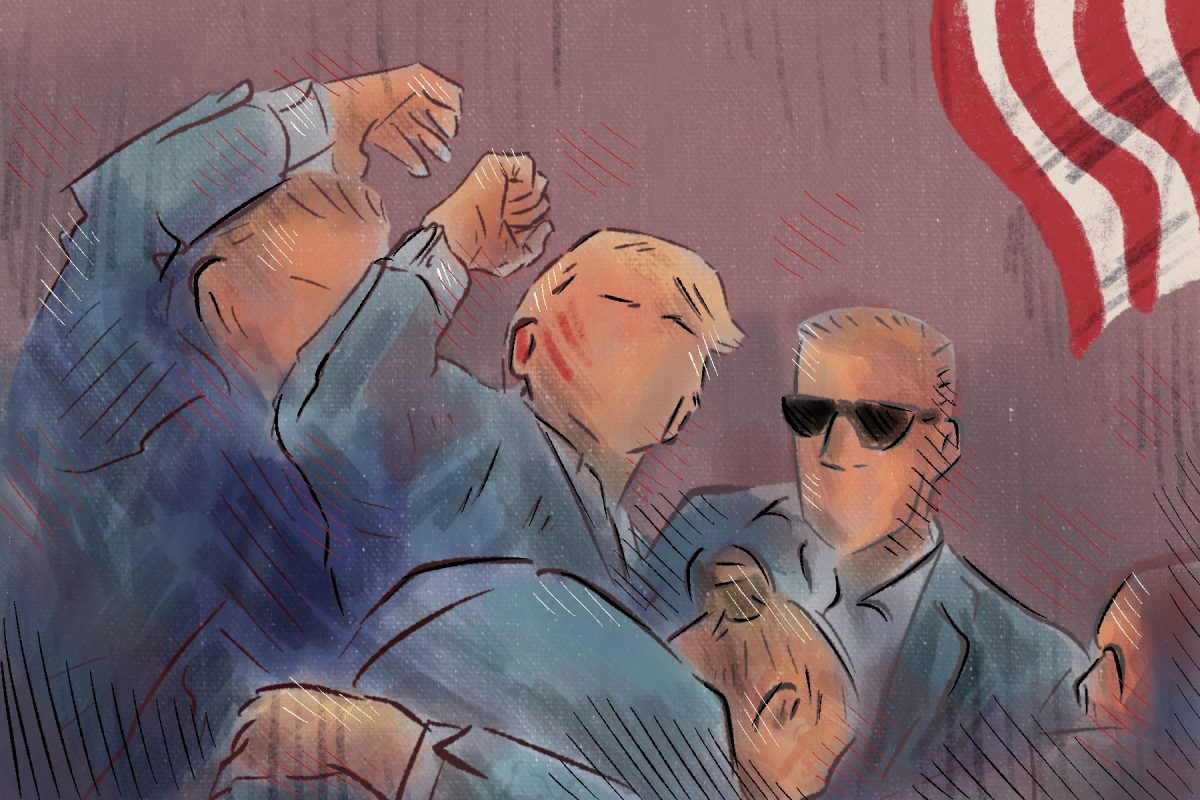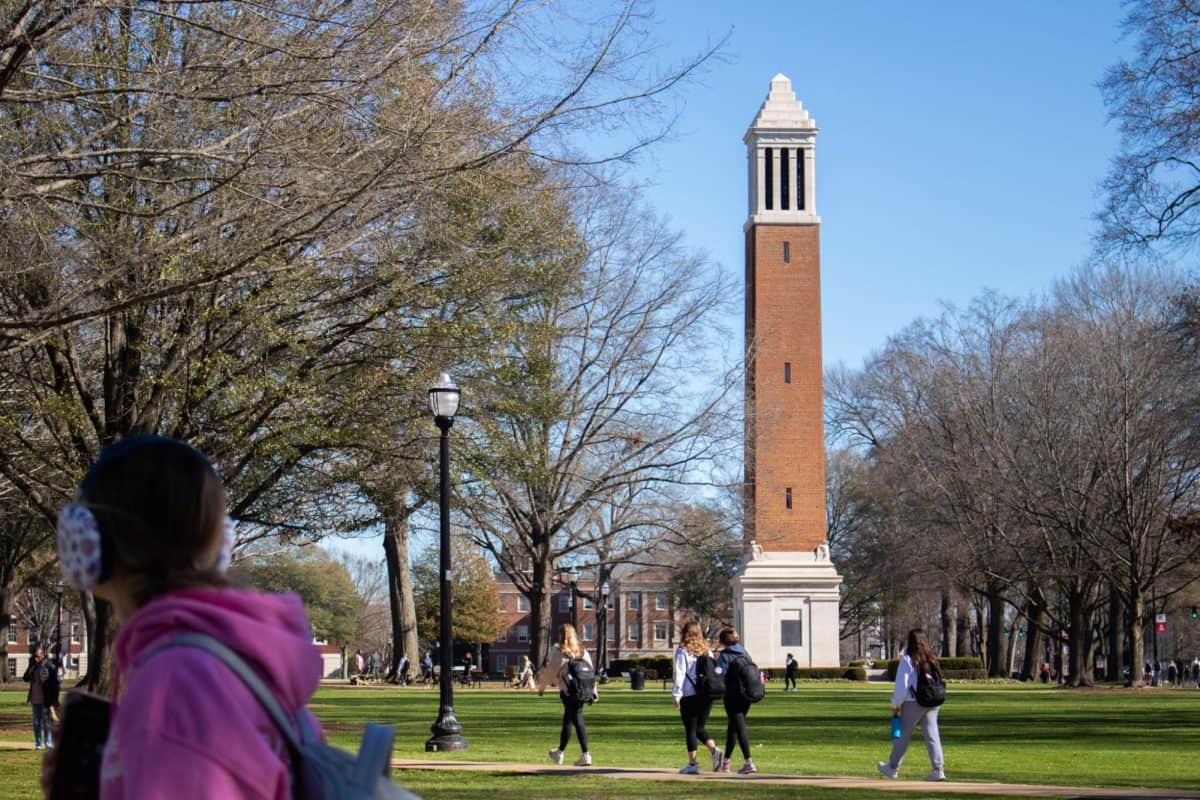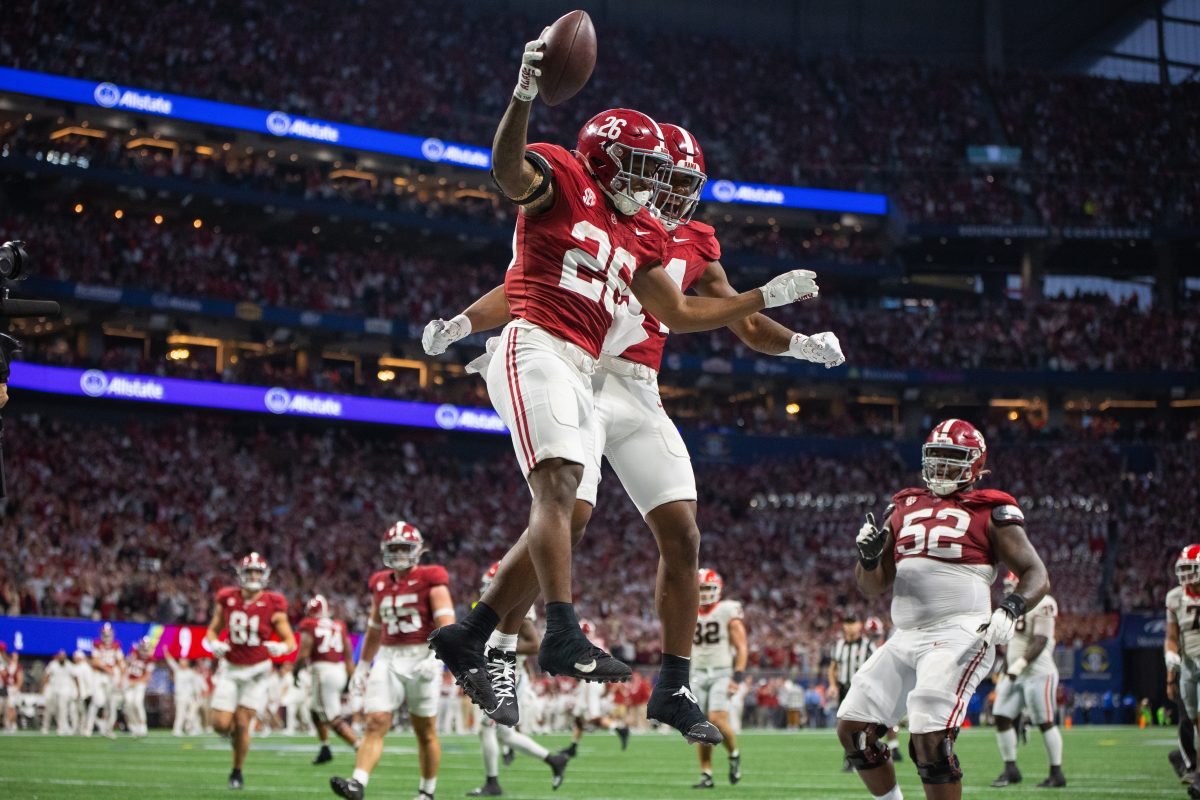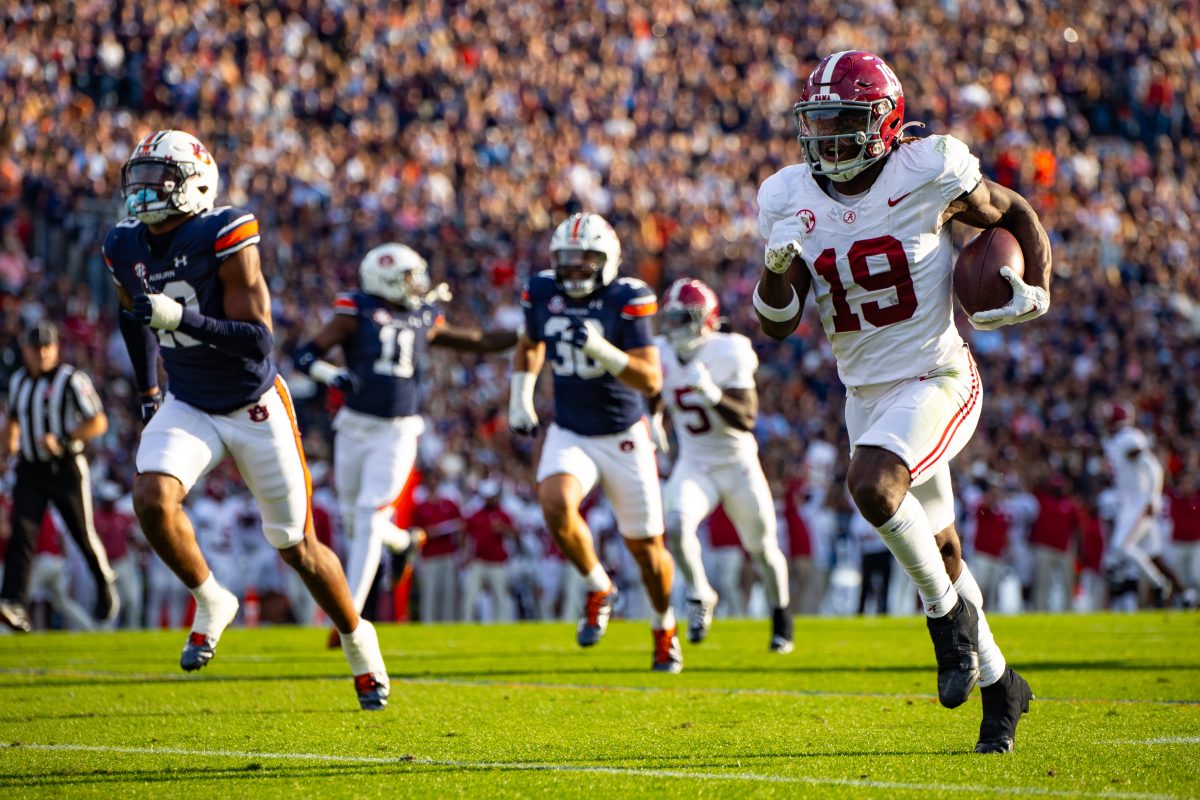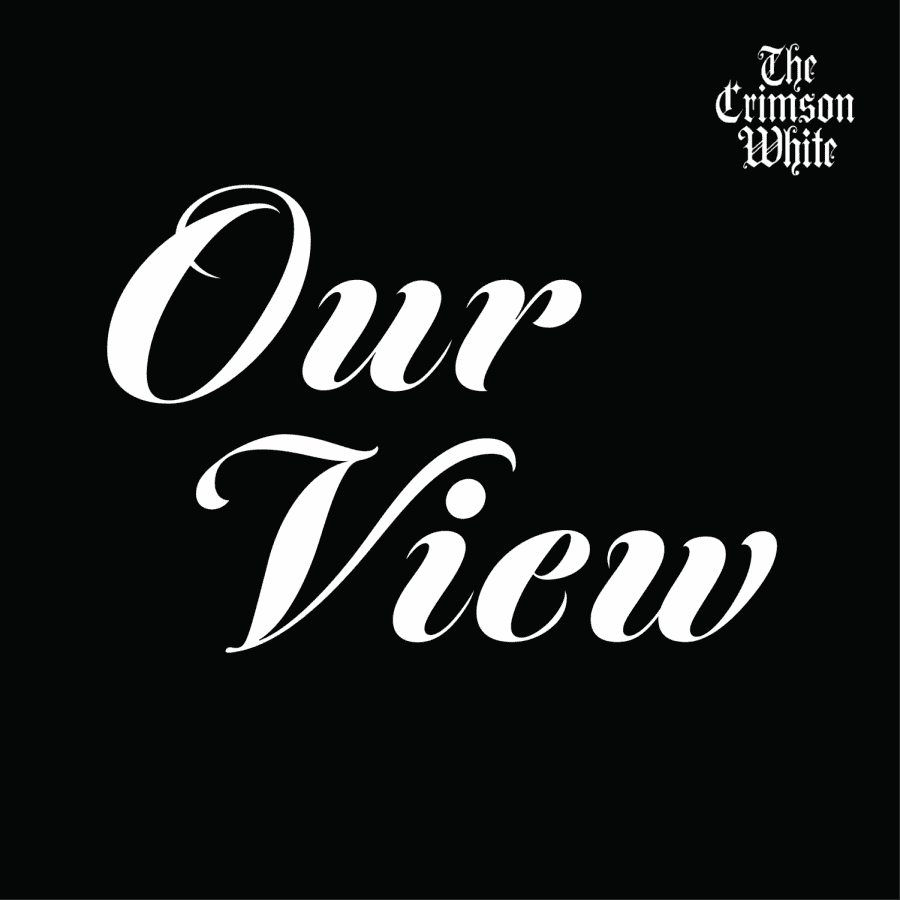With supermarket shelves quickly emptying of name-brand chocolates and floral arrangements, it doesn’t require a calendar for one to know that Valentine’s Day is coming up. A romantic’s daydream and a cynic’s nightmare, Feb. 14 is a day that heavily divides college students.
In recent years deemed a “Hallmark holiday,” Valentine’s Day raked in over $25 billion from American consumers in 2023. While it’s not exactly a secret that the holiday is heavily commercialized, it didn’t start that way.
Legend says it started with a simple letter from a martyred Italian priest over 1,000 years ago. Written to his beloved from prison, it was an innocent act of love with a weapon mightier than the sword and signed “from your Valentine,” apparently St. Valentine of Terni.
St. Valentine was a man who was imprisoned for defying orders and secretly marrying couples to spare husbands from being enlisted. He was a man who fought for love.
Though it is unclear if the St. Valentine that was imprisoned is the same that wrote the note, on account of many Christian martyrs named Valentine, the powerful message still prevails.
The symbolism behind St. Valentine’s selfless act quickly caught on, and commercial Valentine’s cards began being printed in the 1700s. The Hallmark company sold its first custom cards for the occasion in 1913, and today there are over 100 million valentines exchanged every year.
What began as one man’s testament to love turned into an annual worldwide declaration of adoration.
Today, Valentine’s Day is thought to be a holiday with almost as many fools as April 1. Music constantly talks about the irrationality that comes hand in hand with utter infatuation, from Quinn XCII’s “FFYL (Fool for Your Love)” to Led Zeppelin’s “Fool in the Rain.” Even Elvis proclaimed that “only fools rush in.”
But why is it that we naturally associate these feelings with naivety? Is it because the idea of modern love has evolved far from what were once honest and upfront actions?
“Going steady” has evolved into hookups, a phrase we use to describe connecting parts, not people. Hookup culture has spread around college campuses and into courtships across the country.
There’s a veritable plague of one-night stands, drawers full of empty promises and unhappy endings.
Studies from the University of Kansas show that over 60% of dates among college students break the “traditional script” — defined as men asking, paying, and initiating sex. But who set these traditional standards for dating discourse, and why are they now being ignored?
The rise of dating apps in recent years has only contributed to the modernization of conventional courtships. A study by Pew Research found that nearly 50% of 18-29 year olds use or have used dating apps, and this number is steadily rising.
The disconnect of these on-screen interactions leaves out the most vital parts of building relationships. The rigidity of rapid-fire, compulsory responses leads to the inevitable “ghosting.” This new standard of relationship practices creates a digital divide and prevents what were once natural connections.
Being on the balance beam of kid and adult can make a feeling like love, something that’s supposed to be so instinctive, make us feel so inept. So, we should turn to those with years of experience and wisdom. Here’s the personal love story of Lenora Burnett, a resident at Crimson Village in Tuscaloosa.
“My husband and I have been married 62 years. We started dating in the 10th grade. We only broke up for about six months, I guess. We were going steady again by our junior or senior prom,” Burnett said.
“It snowed that night, it was truly beautiful. But, I mean, our gowns and tuxedos in the snow? Ugh! Anyways, Calvin ran out in that cold and brought the car under the veranda so I wouldn’t get my gown all wet. I had a real pretty soft pink gown, with the big hoops underneath them.
“When Calvin saw me that night, he said, ‘My God, you look beautiful!’ Of course that thrilled me, but he always told me I looked great. Every single day. We truly loved each other.
“When he died of cancer 10 years ago, he told me he’d wait for me at the corner of Wellness and Happiness Street,” she said. “That he’d pick a place and for me to follow him. I’ve been married 62 years, and I’m still married today. He said he’d wait on me, and I’ll wait on him. Because that’s what love is.”
As she guided me back to the lobby, Burnett thanked me for the interview. However, I quickly assured her that I was the one to do the thanking. For sharing a piece of her story with me, and for proving that happy endings have not abandoned all hope.
As for Crimson Village resident Jennie Ayers, here is her advice to college students for this upcoming Valentine’s Day, because in her words, “Y’all really do need it!”
“My advice? Fall in love with someone you really like. Like their company first, like their philosophy, like the way they treat you, like the person first,” Ayers said. “Be their best friend. If you could fall in love with your best friend, then you’ve got it made. You already want to be around them, share things with them, and they do you.”
Ayers explained that if she hadn’t failed to find love so many times, she would never have found it.
And when it does happen, she said, “It happens when you’re not expecting it, not looking for it.”
Ayers met her husband thanks to a “help wanted” ad in the local paper. She was hired as the manager of a doctor’s office and became friends with the doctor first. They were best friends for two years, and then they fell in love.
“So I found him in the newspaper. In a ‘help wanted’ ad! No name or anything! Hah! You just have to embrace what part of the cycle you’re in, embrace where you are now.”
Embracing Valentine’s Day in its entirety, however, is far easier said than done. It’s a major holiday that revolves around an even more major word.
But love is not just a word to say. It’s a four-letter word turned feeling: not measured by price tags on precious jewels, but by beats of hearts, bats of eyelashes, and blushes of one’s cheeks. It’s an encounter unique to each human lucky enough to experience it. Love knows no age, no timeline, but it does know all of us, in some capacity.
Feb. 14 is a day to celebrate that love — wherever it may be found, proudly by all, and not clouded among takes by those once bitten and twice shy.

